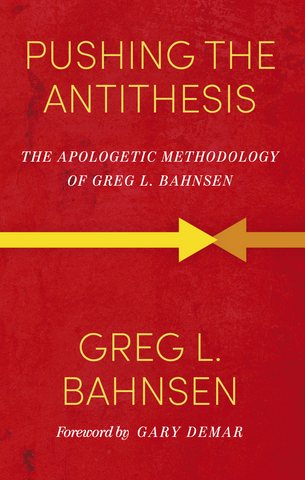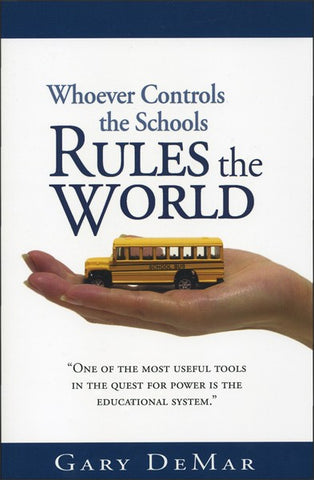There was a radical worldview shift in the 1960s. What was its foundational source? Those pushing for an overthrow of the establishment learned a great deal when their radical and often violent actions failed to accomplish their stated goals to bring down the system and turned most of the population against them and their tactics. In time, the radicals understood it would be necessary to capture the institutions without ever firing a shot or blowing up another building. Roger Kimball captures the tactic well in his book The Long March: How the Cultural Revolution of the 1960s Changed America: “The long march through the institutions signified in the words of [Herbert] Marcuse, ‘working against the established institutions while working in them’. By this means—by insinuation and infiltration rather than by confrontation—the counter-cultural dreams of radicals like Marcuse have triumphed.”[1]
Before Marcuse there was Antonio Gramsci (1891-1937). Gramsci considered Christianity to be the “force binding all the classes—peasants and workers and princes, priests and popes and all the rest besides, into a single, homogeneous culture. It was specifically Christian culture, in which individual men and women understood that the most important things about human life transcend the material conditions in which they lived out their mortal lives.”[2] Economic policies, threats of violence and loss of property and position, and expulsion to gulags for retraining were used to compel the masses to conform to the new ideology. “The only Marxist state that existed” in Gramsci’s day “was imposed and maintained by force and by terrorist policies that duplicated and even exceeded the worst facets of Mussolini’s Fascism.”[3] The later building of the Berlin Wall was the most visible evidence of Gramsci’s critique of traditional Marxism as was the metaphorical Iron Curtain. Barriers had to be erected to keep people from escaping the “Workers’ Paradise.”
While Gramsci was still a committed Marxist and “totally convinced that the material dimension of everything in the universe, including mankind, was the whole of it,”[4] he believed that the road taken by traditional Marxists to “utopia” was one lined with formidable obstacles.

Pushing the Antithesis
Pushing the Antithesis consists of twelve chapters that include study questions, an answer key, a glossary of terms, and a comprehensive bibliography. If you want to be equipped to present the truth of the gospel in a compelling way, then this book is required reading.
Buy NowGramsci began re-imaging Marxism by dropping the harsh slogans. “It wouldn’t do to rant about ‘revolution’ and ‘dictatorship of the proletariat’ and the ‘Workers’ Paradise.’”[5] Instead, Marxism would have to put on a new face and talk about “national consensus,” “national unity,” and “national pacification.” Sound familiar? The democratic process rather than revolution would be used to bring about the necessary changes. But what would it take to reeducate the masses? First, pluralism would be promoted and defended. Further, Marxists would join with other oppressed groups—even if they did not share Marxist ideals—to create a unified coalition of voting power. After solidifying their partnership “they must enter into every civil, cultural and political activity in every nation, patiently leavening them all as thoroughly as yeast leavens bread.”[6]
Gramsci and Marcuse were atheists. Gramsci broke with Marx and Lenin’s belief that the masses would rise and overthrow the ruling “superstructure.” No matter how oppressed the working classes might be, their Christian faith would not allow such an overthrow. Marxists taught “that everything valuable in life was within mankind.”[7] Gramsci’s enemy was not capitalism. It was Christianity. Gary North (1942-1982) explains that “Gramsci in the 1930s acknowledged that Western society was deeply religious, and that the only way to achieve a proletarian revolution would be to break the faith of the masses of Western voters in Christianity and the moral system derived from Christianity. He placed religion and culture at the base of the pyramid. This means that the mode of production [capitalism] is secondary.”[8] According to Gramsci a “regime grounded in Judeo-Christian beliefs and values could not be overthrown until those roots were cut,” and those roots were found in the remnants of the Christian religion. “[T]o capture the West, Marxists must first de-Christianize the West.”
Gramsci urged his fellow Marxists to form popular fronts with Western intellectuals who shared their contempt for Christianity and bourgeois culture and who shaped the minds of the young. Message to the comrades: “It’s the culture, stupid!” Since Western culture had given birth to capitalism and sustained it, if that culture could be subverted, the system would fall of its own weight. On the cover of his 1970 runaway bestseller The Greening of America, the manifesto of the counterculture, author Charles Reich parroted Gramsci perfectly: “There is a revolution coming. It will not be like revolutions of the past. It will originate with the individual and with culture, and it will change the political structure only as its final act. It will not require violence to succeed, and it cannot be successfully resisted with violence. It is now spreading with amazing rapidity, and already our laws, institutions, and social structure are changing in consequence…. This is the revolution of the new generation.”
*****
In the end, the Communist party of Lenin and Stalin remained what it had been from the beginning, a conspiracy of political criminals who used Marxist ideas and rhetoric to disguise what they were really about: absolute power. Lenin’s regime died detested and unmourned. But the Gramscian revolution rolls on, and, to this day, it continues to make converts.[9]
It took time for the new Leftist radicals to understand that Chinese communist leader Mao Zedong’s coined phrase “Political power grows out of the barrel of a gun” would not work in the traditionally Christian West. Before the long march through the institutions became the new strategy, violent revolution was the name of the game. Advocates of revolutionary transformation considered their actions an offshoot of atheistic evolution controlled and actionized by elites who pushed for a new worldview but who had no idea how to build anything new from the ashes. We saw this with the burning of our cities in protest of whatever the latest grievance was. After the fires were put out, the smoke cleared, and businesses burned out, what athen? “Like Marcuse, they have nothing constructive to offer in place of that which they would destroy.”[10]
The long-term strategy is control. Those who dissent will not be tolerated. They will be attacked without mercy. Here’s just one of many recent examples. “A ‘deeply alarming’ situation has unfolded in Colorado, where a Christian-owned coffee shop has reportedly been under fire by LGBT activists, communists, and others over the owners’ ‘biblical stance on sexual sin.’ [C]ommunists and other LGBT protesters were triggered by Scripture on the website of his coffee shop’s parent nonprofit Recycle God’s Love, which ministers to the local homeless population.” (Source) Marcuse is dead, but his tactics remain.
One of the major institutions that the long march took over was education. It was first on its list of disciplines to conquer. For a detailed discussion of this topic see the just published book America’s Cultural Revolution: How the Radical Left Conquered Everything by Christopher F. Rufo. The following is from “strict atheist” Richard Rorty (1931-2007) who knew where real transformational power was found and implemented:
It seems to me that the regulative idea that we heirs of the Enlightenment, we Socratists, most frequently use to criticize the conduct of various conversational partners is that of “needing education in order to outgrow their primitive fear, hatreds, and superstitions.”… It is a concept which I, like most Americans who teach humanities or social science in colleges and universities, invoke when we try to arrange things so that students who enter as bigoted, homophobic, religious fundamentalists will leave college with views more like our own….
The fundamentalist parents of our fundamentalist students think that the entire “American liberal establishment” is engaged in a conspiracy. The parents have a point. Their point is that we liberal teachers no more feel in a symmetrical communication situation when we talk with bigots than do kindergarten teachers talking with their students….
When we American college teachers encounter religious fundamentalists, we do not consider the possibility of reformulating our own practices of justification so as to give more weight to the authority of the Christian scriptures. Instead, we do our best to convince these students of the benefits of secularization.
We assign first-person accounts of growing up homosexual to our homophobic students for the same reasons that German schoolteachers in the postwar period assigned The Diary of Anne Frank…. You have to be educated in order to be … a participant in our conversation.… So we are going to go right on trying to discredit you in the eyes of your children, trying to strip your fundamentalist religious community of dignity, trying to make your views seem silly rather than discussable.
We are not so inclusivist as to tolerate intolerance such as yours.… I don’t see anything herrschaftsfrei [domination free] about my handling of my fundamentalist students. Rather, I think those students are lucky to find themselves under the benevolent Herrschaft [domination] of people like me, and to have escaped the grip of their frightening, vicious, dangerous parents.… I am just as provincial and contextualist as the Nazi teachers who made their students read Der Stürmer;[11] the only difference is that I serve a better cause.[12]
Not a shot was fired. No one was forced into concentration camps. Millions of parents willingly sent their children into public schools and universities systems that are upfront in their hostility toward Christianity. The takeover of the education system in the United States goes back a long way,[13] but it accelerated in the 1960s when the radicals put away their explosives, put on suits and ties, and flooded the universities and took control of every department.
These schools of higher education now train millions of young people who influence every sphere of American life. They are dominated by Leftists. It took them decades to accomplish their goal, but they succeeded. Compare the educational foundation of Harvard where the 1692 motto was Veritas Christo et Ecclesiae, “Truth for Christ and the Church,” with the Harvard of today. It’s an anti-Christian institution. Its Latin motto is Veritas, “Truth,” but as the folks at Harvard define it. The following is from Chester M. Pierce (1927-2016) who was a professor of education and psychiatry at Harvard Medical School.
Every child in America entering school at the age of five is mentally ill, because he comes to school with certain allegiances toward our founding fathers, our elected officials, toward his parents, toward a belief in a supernatural Being, toward the sovereignty of this nation as a separate entity. It’s up to you teachers to make all of these sick children well by creating the international children of the future.[14]
Most Christians have not caught on. Most believe their schools are different. Maybe in degree, but they have gotten worse since Pierce’s Day. There is not even a remnant of a biblical worldview present. Consider the following from 1983:
The battle for humankind’s future must be waged and won in the public school classrooms by teachers who correctly perceive their role as the proselytizers of a new faith. Such teachers will be utilizing a classroom instead of a pulpit to convey humanist values in whatever subject they teach, regardless of the education level. Classrooms, must and will become an arena of conflict between the old and the new—the rotting corpse of Christianity and the new faith of humanism, resplendent in its promise of a world in which the never-realized Christian ideal of “love thy neighbor” will finally be achieved.[15]
As is typical of atheists, Dunphy must borrow moral capital from the biblical worldview to maintain the “Christian ideal of ‘love thy neighbor’” (Lev. 19:18; Matt. 22:36-40) as did Rorty who said that his “sense of the holy is bound up with the hope that someday my remote descendants will live in a global civilization in which love is pretty much the only law.” Love will be defined by those in power.
There’s a lot of work to do. Taking back our nation’s schools is not a viable or moral goal. Governments should not be educating our children, and confiscated money in the form of taxes should not be used to fund them. And one more thing, don’t expect to be “raptured” to get us out of this mess!

Whoever Controls the Schools Rules the World
Whoever Controls the Schools Rules the World shows how education can be used as a vehicle for social change from Karl Marx and Adolf Hitler to secular humanism and radical Islam. Our worldview opponents understand that education is where the war of ideas is fought. If Christians are serious about securing the future for our children, they must understand the nature of the war we are fighting. If you have children, want children, or know someone who has children -- you need to get this book and read it before it becomes too late to save the generation to follow us from the ruins.
Buy Now[1]Roger Kimball, The Long March: How the Cultural Revolution of the 1960s Changed America (San Franciso: Encounter Books, 2000), 15.
[2]Malachi Martin, The Keys of This Blood: The Struggle for World Dominion Between Pope John II, Mikhail Gorbachev and the Capitalist West (New York: Simon and Schuster, 1990), 245.
[3]Martin, The Keys of This Blood, 248.
[4]Martin, The Keys of This Blood, 248.
[5]Martin, The Keys of This Blood, 249.
[6]Martin, The Keys of This Blood, 250.
[7]Martin, The Keys of This Blood, 245.
[8]Gary North, “Conspiracy Theories vs. the Religion of Democracy,” GaryNorth.com (March 14, 2013): https://www.garynorth.com/public/10771.cfm
[9]Patrick J. Buchanan, The Death of the West: How Dying Populations and Immigrant Invasions Imperil our Country and Civilization (New York: Thomas Dunne Books/St. Martin’s Press, 2002), Chap. 4.
[10]Eliseo Vivas, Contra Marcuse (New Rochelle, NY: Arlington House, 1971), 13.
[11]The Stormer was a weekly German newspaper published from 1923 to the end of World War II.
[12]“Universality and Truth,” in Robert B. Brandom ed., Rorty and His Critics (Oxford: Blackwell, 2000), 21-22.
[13]Rousas J. Rushdoony, The Messianic Character of American Education (Nutley, NJ: The Craig Press, 1963).
[14]Addressing the Association for Childhood Education International in April 1972, Denver, Colorado.
[15]John J. Dunphy, “A Religion for a New Age,” The Humanist, 43:1 (January/February 1983), 26.

